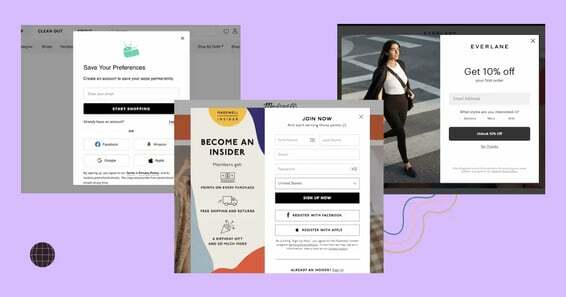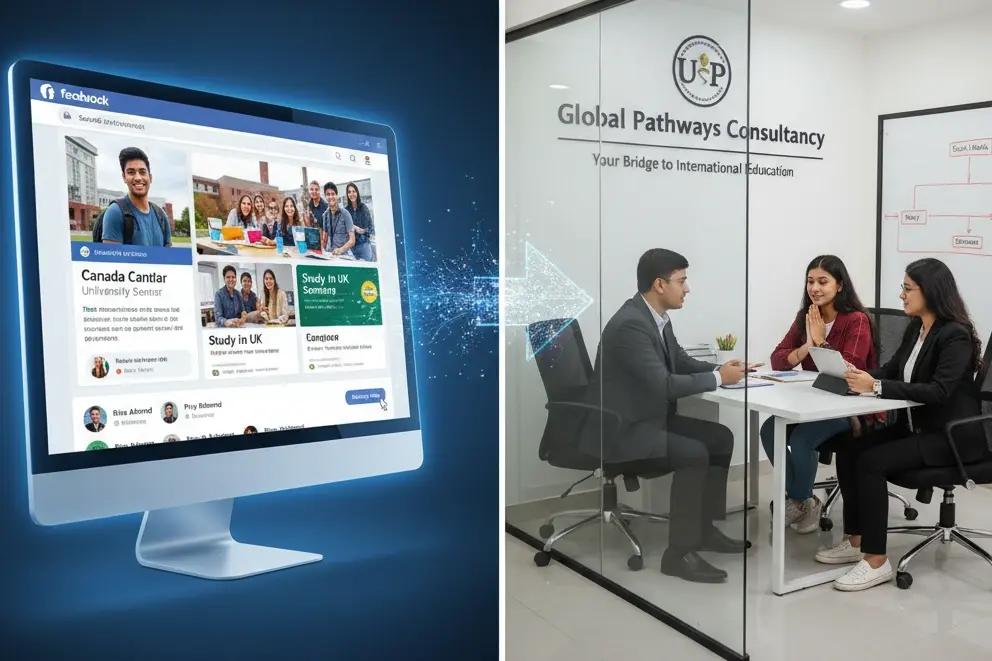25 Ways To Improve Your Landing Page Conversion Rate in 2030

Are you suffering from a dwindling or straight-up reduced conversion rate? Then, this blog might be a big help for you!
In general, landing pages should be redesigned at least once a year. If you didn’t do that, do it before you think of anything else. If you did, and are still seeing those numbers reduce and don’t want to see them anymore, we are here to help!
So, let’s see how you can improve your landing page conversion!
Content and Design Improvements

Create a Compelling Headline
There is a reason this sits above all other points and in a separate point of its own. The main and target headlines are really the focus points of your landing page.
If the landing page heading isn’t eye-catching, or sensational, no matter how many visitors you get, you will never get a significant conversion rate.
Hire a professional copywriter if you think you will need help from them, but your headline will have to be the best of the best, and it is absolutely non-negotiable.
Use Clear and Concise Copy
Most of the landing page guides will tell you to tell a story.
Well, because it works. But, don’t start writing sob stories that will try to melt their heart. It only works roughly 2% of the time. Write a good story that goes with the product, and showcases a benefit.
If you can, go for more established storylines like Mentor and Mentee, or Rags to Riches. It could be your own story or it could be a users’, or it can even be about the fictional buyer persona. Whatever you do, if the story goes with the narrative, you’re good!
Use Strong Visuals
By this point, we do mean high-quality images or videos, but that is not all we mean by it.
Strong visuals mean that the visuals you are using sends a clear message, and really differentiates between you and your competitors.
Firstly, your visuals should align with the core message of your landing page. For example, if your landing page is promoting a new product, using images that showcase the product in action can be far more impactful than generic stock photos.
Secondly, strong visuals are those that differentiate your brand from others. By investing in custom visuals—such as unique illustrations, branded photography, or tailored videos—you can create a distinct identity that sets your brand apart.
And finally, the visuals on your landing page should be designed to guide the visitor's eye to important elements, such as your call-to-action (CTA). For instance, an image of a person looking toward your CTA button (click it to see an example) can subtly encourage visitors to do the same.
Use Only One CTA
This does not mean you have to only use one CTA button.
This means, that however many buttons you use, only use one destination for the buttons.
If there are 5 buttons on the landing page and 5 links, make sure all links end up on the same page, your payment processor.
Do not add external links, do not send them to your website, and don’t make them go anywhere else with your CTAs and buttons.
Use Social Proof
Social proof is a powerful psychological tool that can influence visitor behaviour.
There are several ways to effectively incorporate social proof into your landing page. Testimonials, for instance, are direct quotes from satisfied customers, and they can be more relatable to the customer than the business or the marketers themselves.
Reviews and ratings are another form of social proof that can be highly influential. Specially, these sites are considered more trustworthy than Testimonials, since there are usually both positive and negative reviews.
Case studies provide a more in-depth form of social proof by telling the story of how your product or service has helped a particular customer achieve specific results. These are particularly effective in B2B contexts, where potential buyers may need more detailed information to make an informed decision.
Display Clear Pricing
Transparency is an absolute must have for building trust with potential customers. Clearly display your pricing on your landing page to avoid confusion and make their decision making easier.
If your pricing is complex or varies based on factors like usage or quantity, you can use a pricing calculator or explainer. This will help visitors understand the costs involved and make an informed decision.
Target Your Audience
Tailor your landing page content to your target audience. Research your ideal customer's demographics, interests, pain points, and goals.
Then, create content that directly addresses your target audience's needs and desires. If you have access to high quality data from your customers, you can even personalise landing page contents as well.
Use Relevant Keywords
To improve your landing page conversion and search engine visibility, it's essential to have relevant keywords. Conduct thorough keyword research to identify keywords that your target audience is searching for. Carefully place these keywords in your landing page's title, headings, and body content.
Also, consider using keywords in other on-page elements such as image alt text, meta descriptions, and URL structures. Meta descriptions don’t matter a lot in terms of ranking, but they can seriously impact click-through rates by encouraging users to click on your link.
To maximise the effectiveness of your keyword strategy, continually monitor your page's performance using tools like Google Analytics and Search Console. it's so important for SEO and skyrocket your landing page conversion.
Address Common Objections
Use a Strong Value Proposition
Use a Clear and Consistent Hierarchy
Use a Readable Font
Use a Strong Contrast
Use a Clear and Concise Form
Technical Improvements

Use Exit-Intent Popups
Optimise for Mobile
Optimise for Speed
Slow loading times can make people leave before they even see the amazing content you have. Don’t make them leave before they see your offer.
To improve your landing page's speed, optimise image sizes, reduce HTTP requests, leverage browser caching, minify CSS and JavaScript, use a CDN, optimise your server, and test your page speed.
Overall Marketing Improvements
-1.webp)
Use a Chatbot
Create a Sense of Urgency
Have elements of urgency on your landing page. Limited-time offers, such as flash sales or time-sensitive discounts, can urge visitors to buy quickly.
You can add a countdown timer to show the limited availability of your offer. You can also highlight the benefits of acting now, such as early-bird discounts or exclusive access to limited-edition products. This method really works and helps increase landing page conversion.
Use A/B Testing
Create a Sense of Community
Use a Clear and Consistent Brand Message
Offer a Free Trial or Demo
Analyse Competitors
Leverage Retargeting
What Now?
If you read through all of the points for improving your landing page conversion, you are surely one step ahead of your competition!
Now, take the points from this blog and audit your existing landing pages.
Senior RevOps Strategist at Hubxpert
Fazle Rabbi
Table of Contents:
Subscribe to our newsletter

HubSpot: Elevating Bangladeshi Consultancies Beyond Excel
Our 2024 Beginner's Guide to Revenue Attribution Models explains key models & helps you choose the right one to optimize campaigns & boost ROI.

Why Bangladeshi Consultancies Lose 30% of Leads—and How to Fix It
Our 2024 Beginner's Guide to Revenue Attribution Models explains key models & helps you choose the right one to optimize campaigns & boost ROI.

Bangladeshi Study-Abroad Marketing: Converting Social Media into Leads
Our 2024 Beginner's Guide to Revenue Attribution Models explains key models & helps you choose the right one to optimize campaigns & boost ROI.

Best CRM for Education Businesses in Bangladesh
Our 2024 Beginner's Guide to Revenue Attribution Models explains key models & helps you choose the right one to optimize campaigns & boost ROI.

Modern Sales Systems That Actually Convert for Bangladeshi Consultancies
Our 2024 Beginner's Guide to Revenue Attribution Models explains key models & helps you choose the right one to optimize campaigns & boost ROI.

What I Learned Helping Healthcare Businesses Fix Their Sales & Marketing Process
Discover how connected CRM systems like HubSpot can transform healthcare sales and marketing processes, improving patient engagement, reducing no-shows, and streamlining workflows.
-

HubSpot: Elevating Bangladeshi Consultancies Beyond Excel
Discover how businesses are using HubSpot to streamline marketing efforts, boost lead generation, and drive sustainable growth through data-driven strategies.
Marketing -

Why Bangladeshi Consultancies Lose 30% of Leads—and How to Fix It
Discover how businesses are using HubSpot to streamline marketing efforts, boost lead generation, and drive sustainable growth through data-driven strategies.
Marketing -

Bangladeshi Study-Abroad Marketing: Converting Social Media into Leads
Discover how businesses are using HubSpot to streamline marketing efforts, boost lead generation, and drive sustainable growth through data-driven strategies.
Marketing -

Best CRM for Education Businesses in Bangladesh
Discover how businesses are using HubSpot to streamline marketing efforts, boost lead generation, and drive sustainable growth through data-driven strategies.
Marketing -

Modern Sales Systems That Actually Convert for Bangladeshi Consultancies
Discover how businesses are using HubSpot to streamline marketing efforts, boost lead generation, and drive sustainable growth through data-driven strategies.
Marketing -

What I Learned Helping Healthcare Businesses Fix Their Sales & Marketing Process
Discover how businesses are using HubSpot to streamline marketing efforts, boost lead generation, and drive sustainable growth through data-driven strategies.
General




